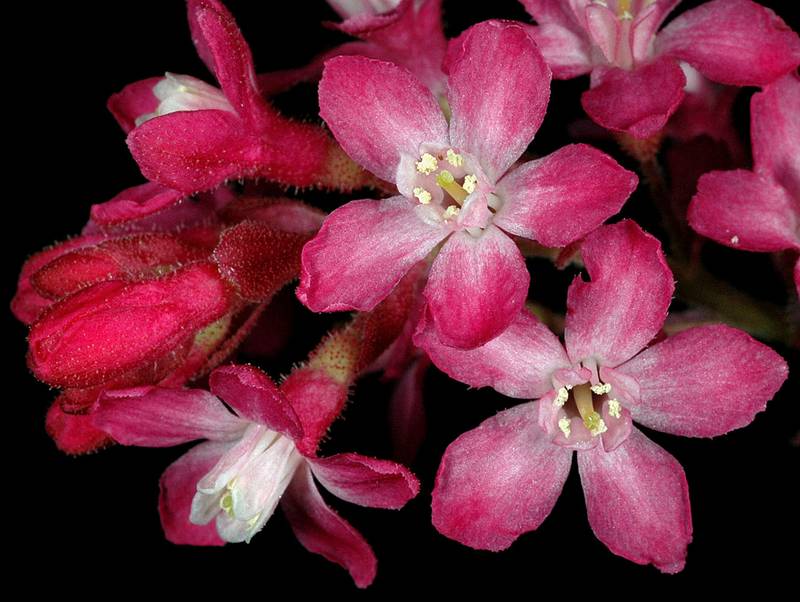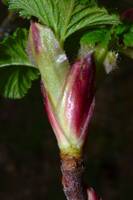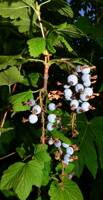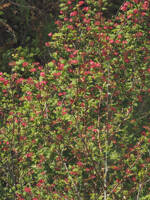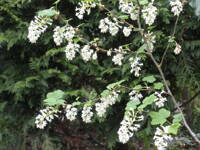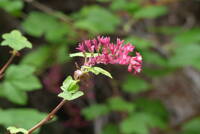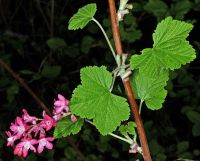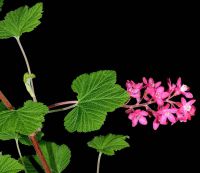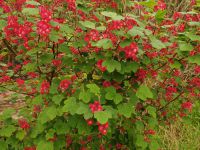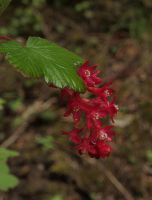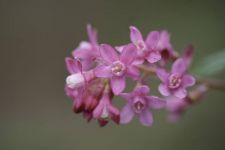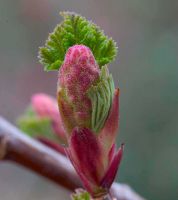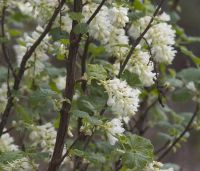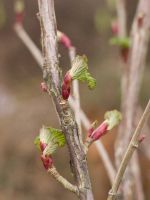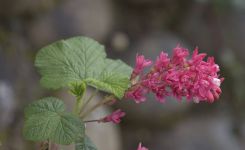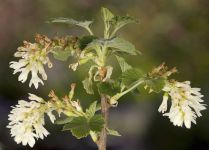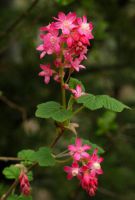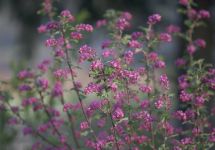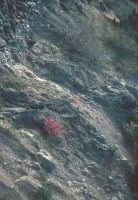Distribution: Occurring chiefly west of the Cascades crest in Washington; British Columbia to California.
Habitat: Open to wooded, moist to dry valleys and lower mountains.
Flowers: February-June
Origin: Native
Growth Duration: Perennial
Conservation Status: Not of concern
Pollination: Bumblebees, bees, hummingbirds
Erect, unarmed shrub 1-3 m. tall, with reddish-brown bark.
Leaves alternate, petiolate, broadly reniform to deltoid-ovate, 2.5-6 cm. broad, the lower surface much paler and hairier than the upper, palmately 5-lobed, the lobes deltoid to rounded and finely denticulate.
Inflorescence of erect, 10- to 20-flowered racemes; pedicels jointed; calyx pale to deep rose, finely pubescent; calyx tube 3-5 mm. long and nearly a broad, the 5 lobes oblong, equal to the tube, spreading; petals 5, white to light rose, obovate-spatulate, entire, 2.5-3.5 mm. long; stamens 5, equaling the petals, the filaments pinkish; styles 2, glabrous, fused almost to the stigmas; ovary inferior.
Berry globose, 7-9 mm. long, glaucous-black.
Publication: Fl. Amer. Sept. 1: 164. 1813.
-
var. sanguineum – blood currant, red currant, red flowering currant
 Occurring chiefly west of the Cascades crest in Washington; British Columbia to California.
Occurring chiefly west of the Cascades crest in Washington; British Columbia to California.
PNW Herbaria: Specimen records of Ribes sanguineum in the Consortium of Pacific Northwest Herbaria database
WA Flora Checklist: Ribes sanguineum checklist entry
OregonFlora: Ribes sanguineum information
E-Flora BC: Ribes sanguineum atlas page
CalPhotos: Ribes sanguineum photos

